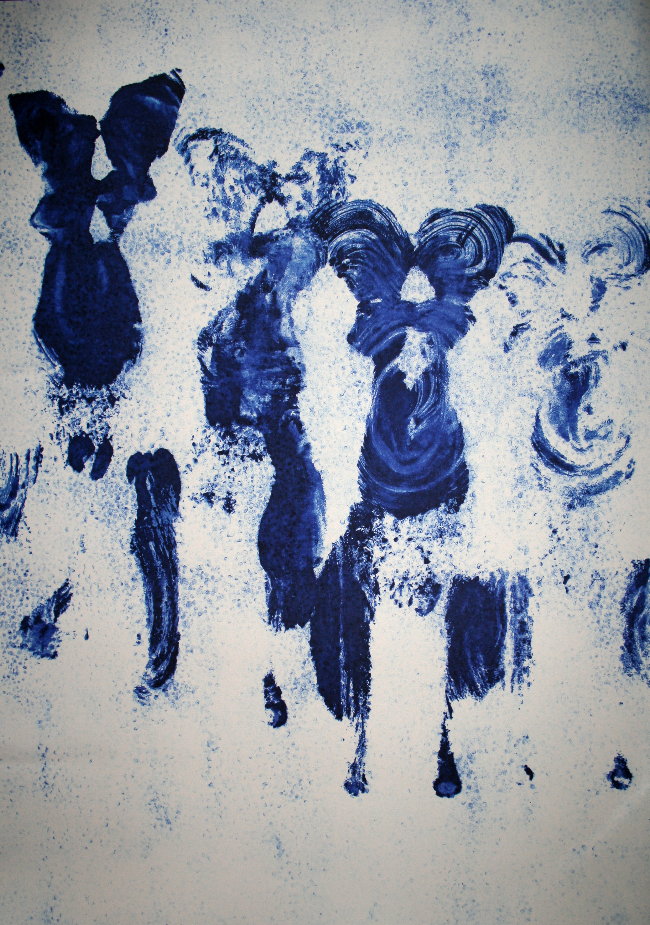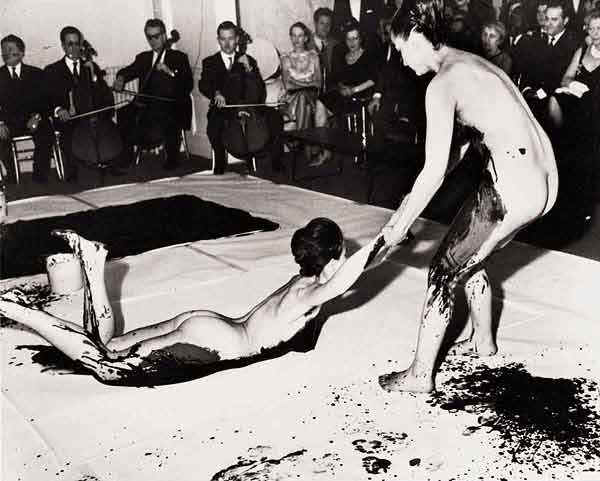Descartes's concept of Cartesian dualism, in which the mind and body act as specific entities, really made me consider my own embodied experience. Walt Whitman's Leaves of Grass suggests that our minds and bodies are intimately connected rather than eternally separated when Whitman writes:
Was somebody asking to see the soul?
See, your own shape and countenance...
Behold, the body includes and is the meaning, the main Concern, and includes and is the soul.
This means that we cannot perceive our bodies in terms of constructed, perspectival (Cartesian) space, but must consider ourselves by another geometry. The human body consists of numerous, identifiable self-similar structures. These anatomical fractals are useful in modeling structures in which similar patterns recur at progressively smaller scales. A similar kind of fractal algorithm also exists in many African structures, where the structures of buildings when seen from above follow the same layout as the objects on the ground, which are also reflected in the designs in the textiles. The people share a cultural knowledge about form that reflects the way in which they live in their bodies. Our knowledge of fractal patterns allows us to jump from a mere single point, two point, or three point perspective (as defined by a Cartesian grid) to infinite systems. This fractal analysis might be the way in which we can begin to understand our bodies from a more haptic perspective.
By recognizing our embodied experience as continuous (as we might experience through an exploration of a fractal) rather than dependent on dualities, we can perhaps begin to understand the neuroscientist Antonio Damasio's words, "the mind is embodied, not just embrianed." As Meskell suggests, our bodies, and therefore our minds, have become the sights of mapped and inscribed social relations, specifically "negotiations of power and gender dynamics." The things that we experience have profound effects on our bodies. Marilyn Strathern's idea that "the body is a museum of one's life" further asserts that the body is the scene of a lived experience rather than a public, legible surface. In a more Foucauldian light we can consider body ornaments, body markings, and dress are ways in which we can connect our lived bodies with society. The "processes of social inscription on the exterior structure coalesce to construct a physical interior" through "the inclusion of the dimensions of time and space." (Joyce: Peterson 2000). Therefore the body is not merely concerned with social relations, but is also a foundation and contributor to this relations.
One thing that struck me from class last week was the way that performance art allows us to communicate directly our lived experiences in everyday society. One particular artist, Yves Klein, has painted figures entirely blue and then made paintings with them as they collide with the white paper. This connects the concept of intentional versus unintentional marks made with our perception of recorded objects. These paintings in a sense become a history of what has happened as well as a history of the people used to create them. The reliefs created by each body are reminiscent of what might be found in an ancient burial site, but the action of creating the work itself is full of life. The craftsman or artist is literally using the body as a tool (suggesting independent thought) but in a sense has made it a sort of stamp through its repetitive use (like a factory worker in a sense). Klein pushes our perception of what we can get out of one body unit.


